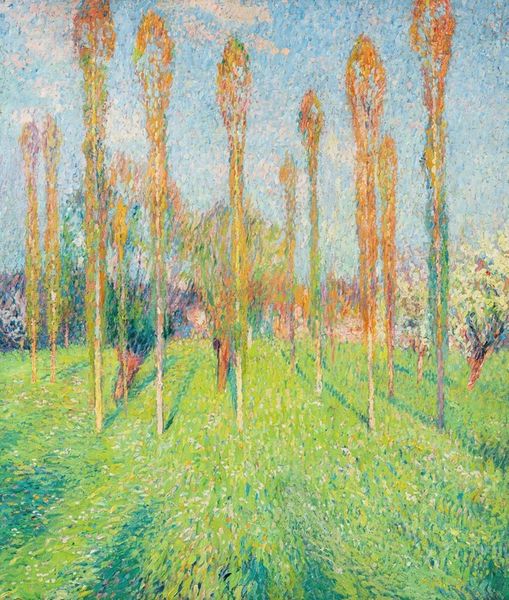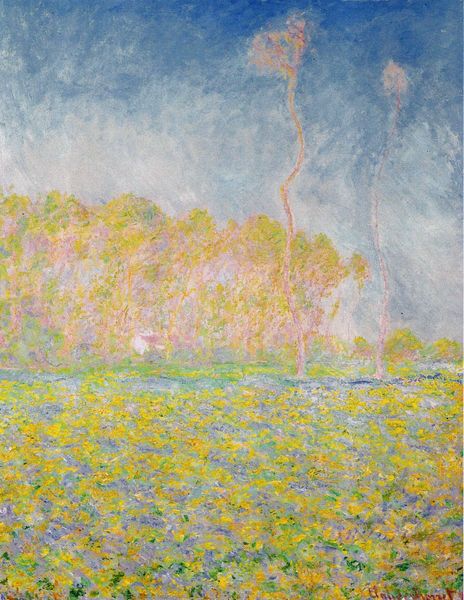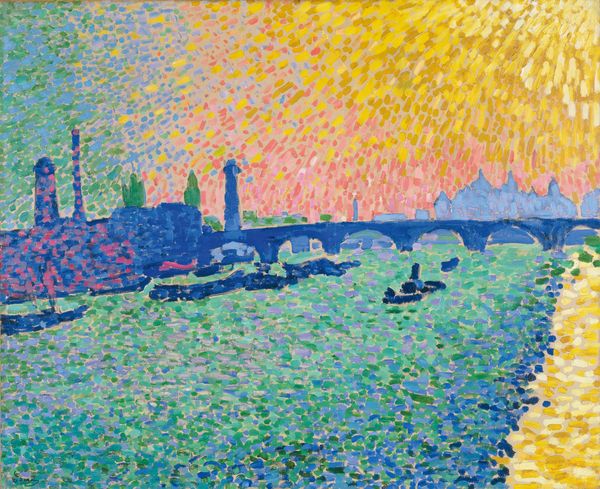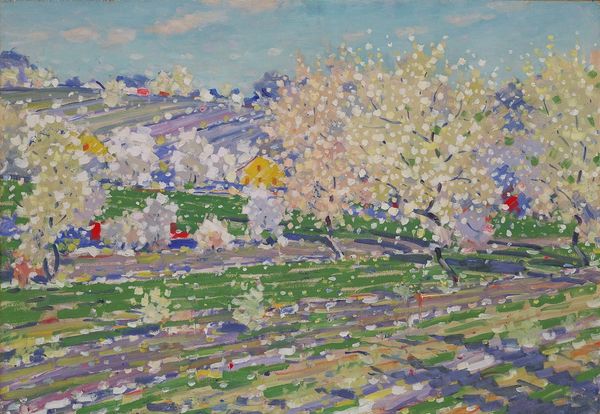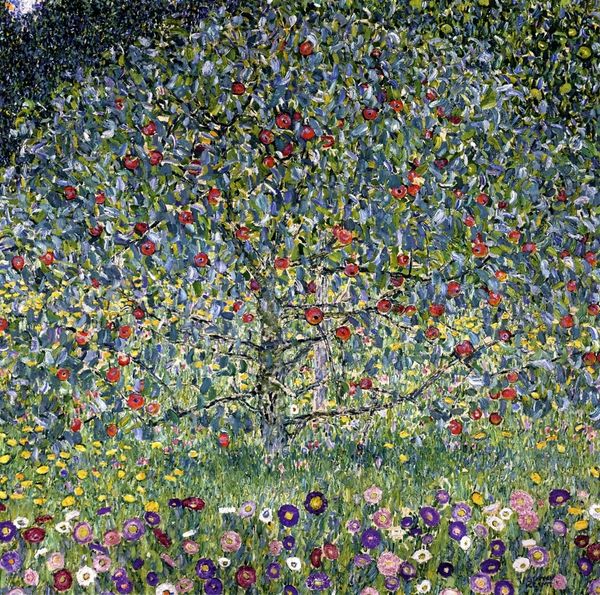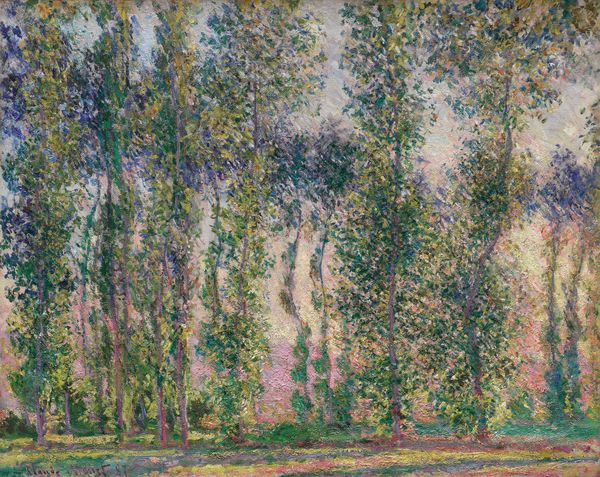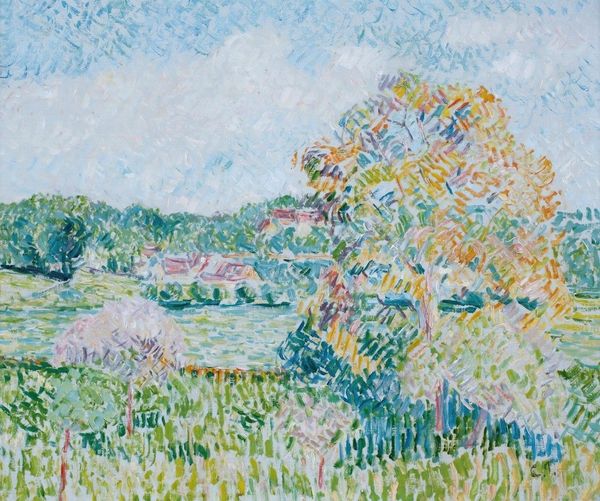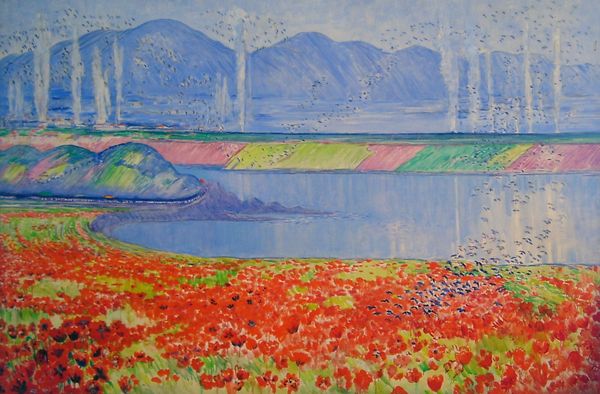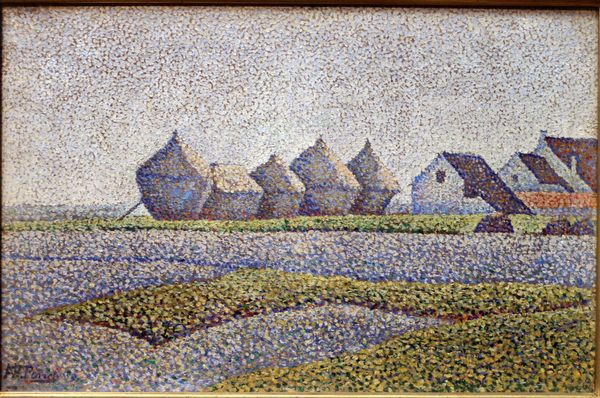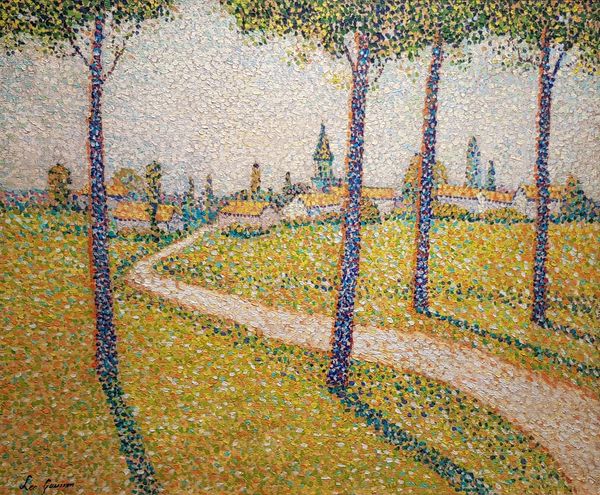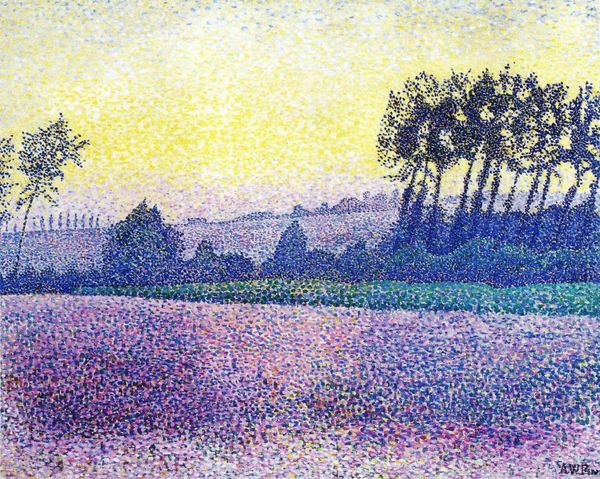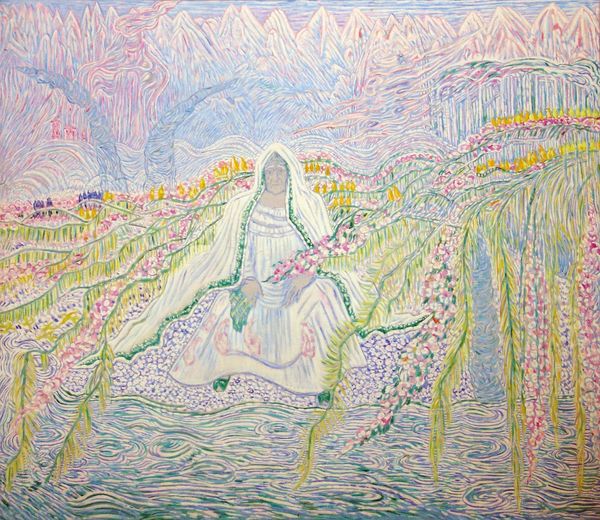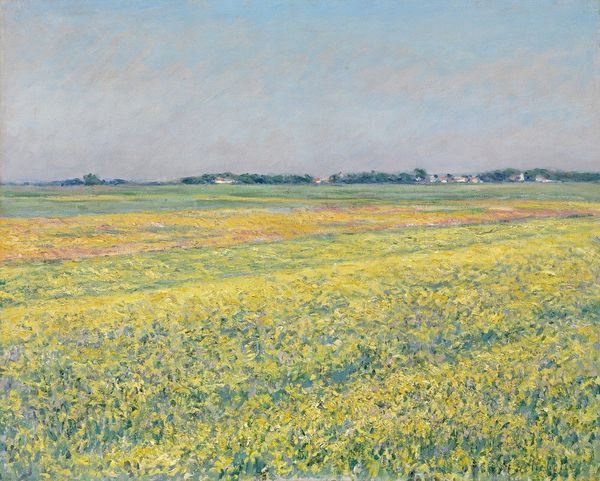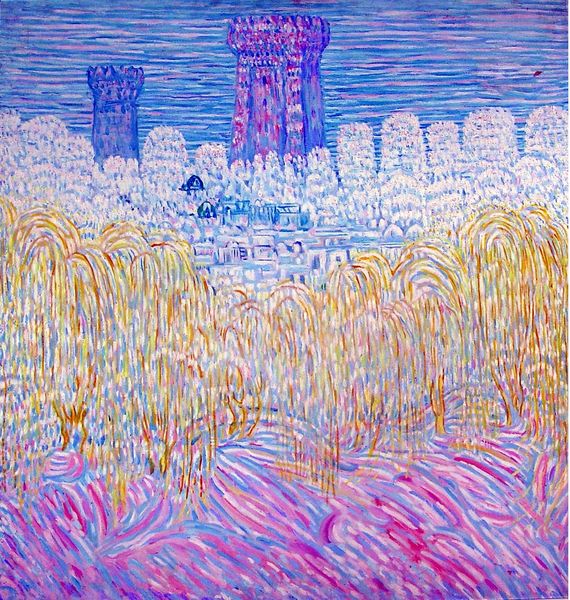
painting, acrylic-paint
#
painting
#
landscape
#
perspective
#
acrylic-paint
#
figuration
#
geometric
#
abstract art
#
surrealism
#
modernism
Copyright: Modern Artists: Artvee
Editor: This is René Magritte's "Le triomphe du mois de mai", painted in 1946 using acrylics. What strikes me is this dreamlike quality—the arches receding into the distance seem like portals to another world. How do you interpret this work? Curator: That sense of a dream is certainly present, and characteristic of Magritte. Painted just after World War II, this work offers a perspective on the role of imagery in a world grappling with devastation and rebuilding. The triumphal arches, usually symbols of power and victory, are here softened, almost camouflaged within nature. How does that interplay of traditional symbols and their distortion speak to you? Editor: I guess it feels…hopeful, in a strange way. Like the symbols of the old order are being reclaimed by something gentler, more natural. Almost like these structures of war are just being slowly overgrown. Curator: Exactly. Consider the political climate of the time. Magritte was associated with the Communist party after the war and sought to make art that communicated broadly. Do you see the symbolism here as aligned with specific post-war political messages? Editor: It's less of a direct message, more of an overall mood, I think. Like, instead of specific political messaging, it provides room for the viewers' experiences. So this wasn’t about saying who *should* be in power. Instead, Magritte evokes a symbol of authority or conquest but gently transforms it into something… almost soothing. Curator: Precisely! It speaks to the transformative power of art itself. It raises an important point about the purpose of art, especially public art, during that historical time. Editor: That’s really fascinating; it completely changes how I see it now. I went from thinking about it visually, and now I have historical and political context. Thank you! Curator: And I’ve appreciated your perspectives as well; it's vital to examine these works, their receptions, and their political potency when understanding modernism.
Comments
No comments
Be the first to comment and join the conversation on the ultimate creative platform.
